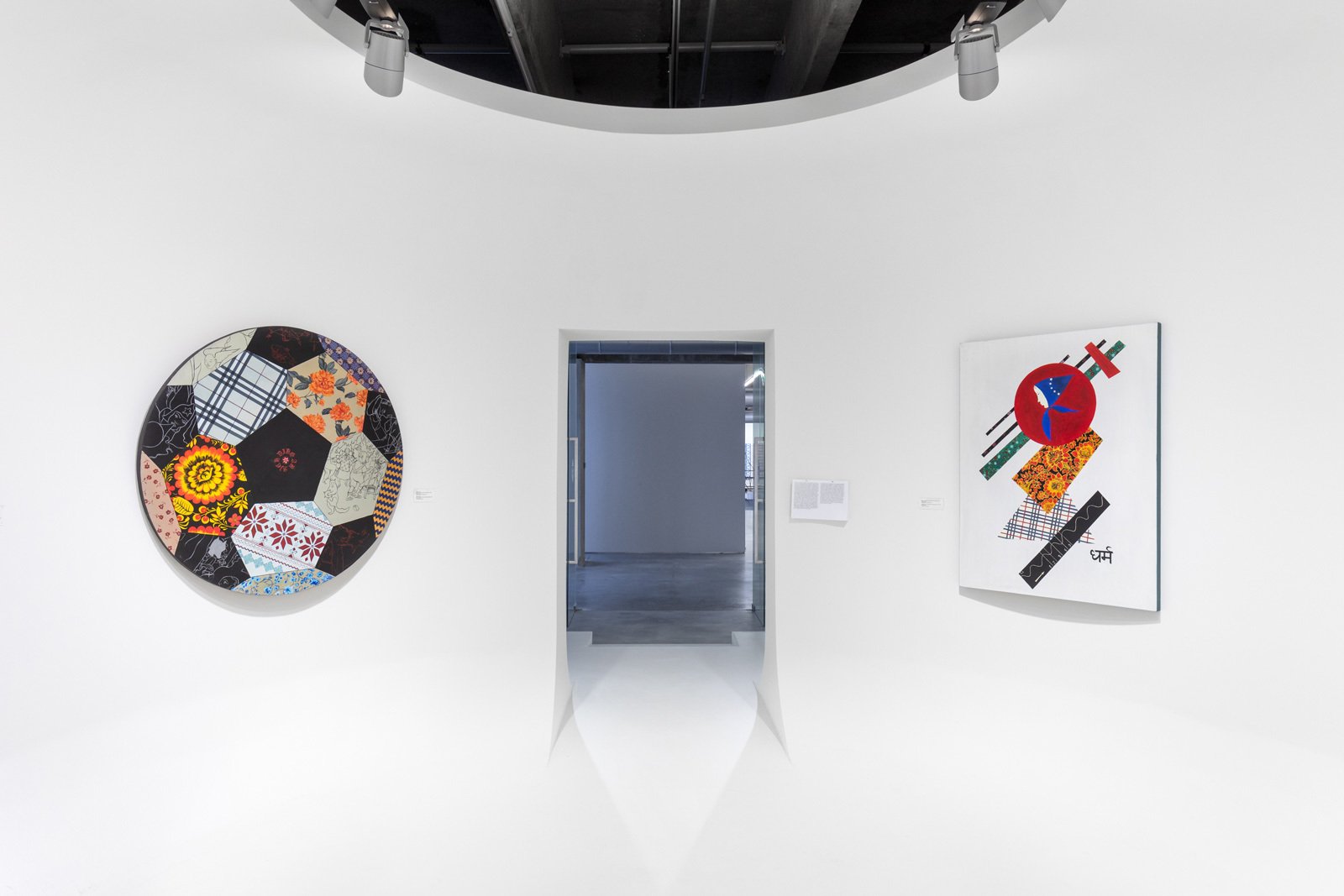Philosophical Categories

The exhibition opens with a series of “philosophical paintings” that each feature two key elements: a pattern that reinterprets a particular traditional craft or a suprematist design and is composed of figures that are formally close to the geometric abstraction of the Russian avant-garde—and an inscription of a term from a particular philosophy or religion ranging from Sufism to German Idealism. All terms are written in the language and font of the culture they come from—Hebrew, Arabic, gothic Fraktur—so each inscription, and therefore each idea, becomes part of the pattern. Pepperstein’s patterns are never reduced to meaningless ornament. Following Goethe (On Arabesques, 1789), Kant (“designs à la grecque, the foliage on borders or on wallpaper, etc., mean nothing on their own: they represent nothing, no object under a determinate concept, and are free beauties,” Critique of Judgment, 1790) and even Derrida, who spoke of the gravitation of patterns toward “signification and representation,” Pepperstein believes in the autonomy of beauty and the ability of pattern to convey meaning, of which the artist’s use of ornament throughout the exhibition provides numerous examples.